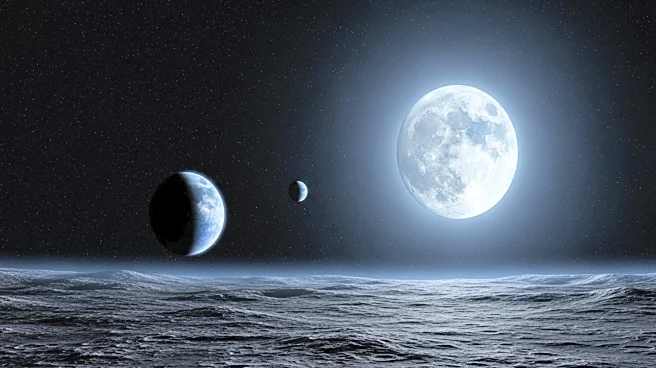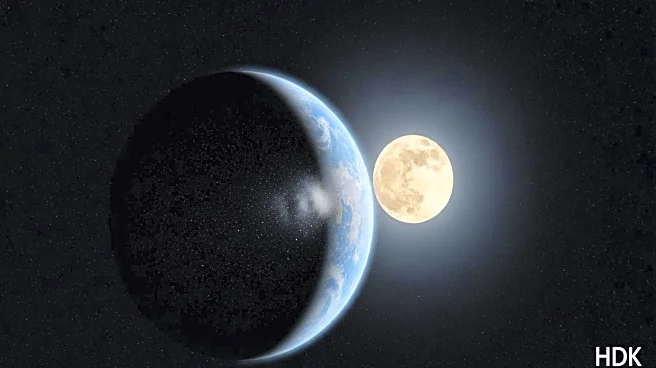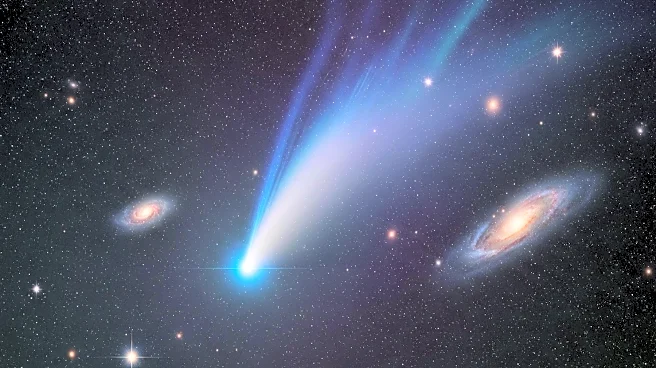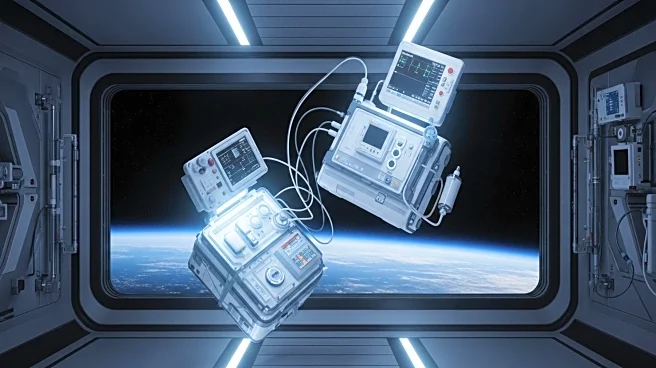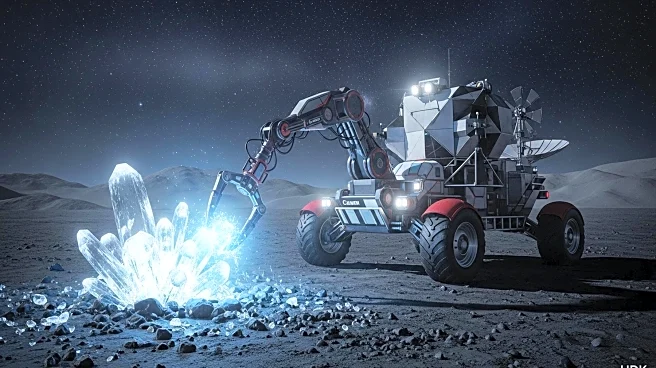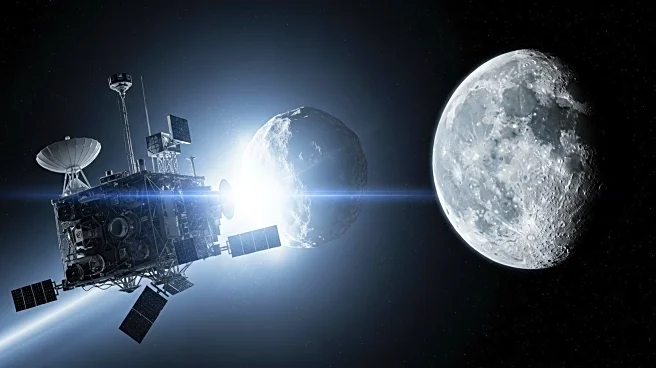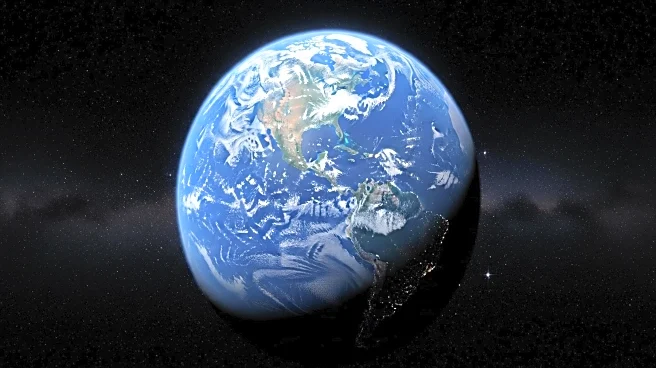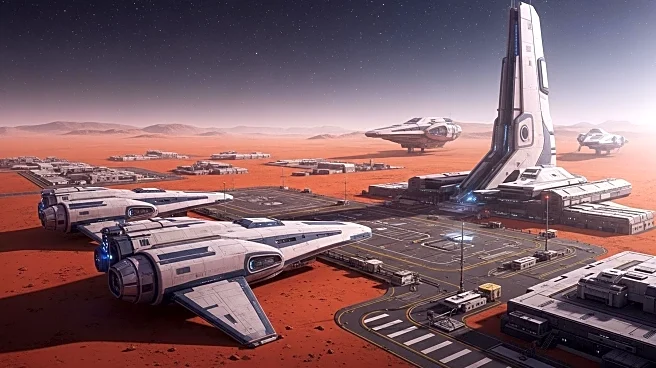What's Happening?
The Moon is slowly moving away from Earth at a rate of approximately 3.8 centimeters per year. This gradual drift is affecting Earth's tides, lengthening the days, and altering the planet's rhythm. Historical data from fossilized mollusks indicate that during the late Cretaceous period, a day lasted about 23.5 hours, and there were approximately 372 days in a year, suggesting the Moon was closer to Earth at that time. The Moon's recession is caused by tidal acceleration, where Earth's rotation drags ocean water into bulges that misalign with the Moon's position, creating a gravitational pull that nudges the Moon into a higher orbit.
Why It's Important?
The Moon's drift has significant implications for Earth's natural systems. As the Moon moves away, the length of Earth's days increases, and the strength of ocean tides changes, impacting marine and coastal ecosystems. This celestial shift also affects the occurrence of solar eclipses, which are expected to cease in about 600 million years as the Moon's apparent size diminishes. Understanding these changes is crucial for scientists studying Earth's geological and environmental history, as well as for predicting future shifts in the planet's natural cycles.
What's Next?
If the current rate of drift continues, Earth and the Moon could eventually reach a new equilibrium where Earth's rotation and the Moon's orbital period align. However, this is not expected to occur on human timescales. In the distant future, increased solar luminosity may lead to ocean loss, further altering Earth's climate and tides. These long-term changes highlight the dynamic nature of Earth's relationship with its celestial companion.

